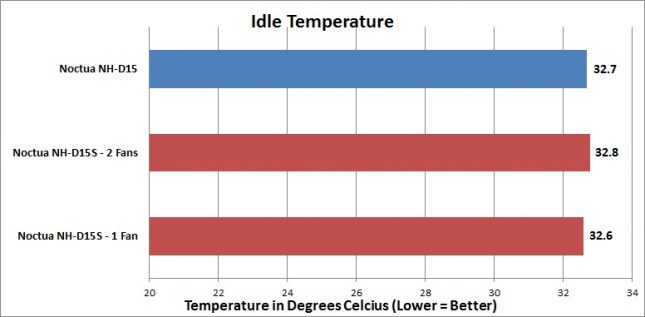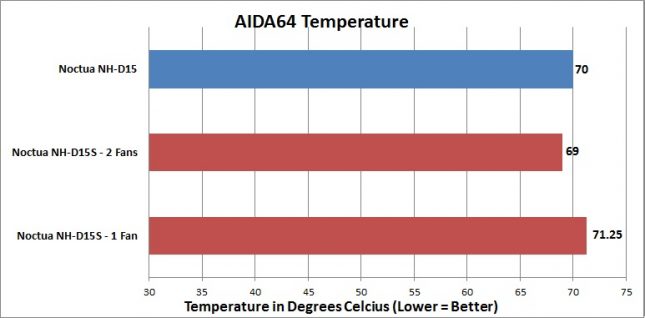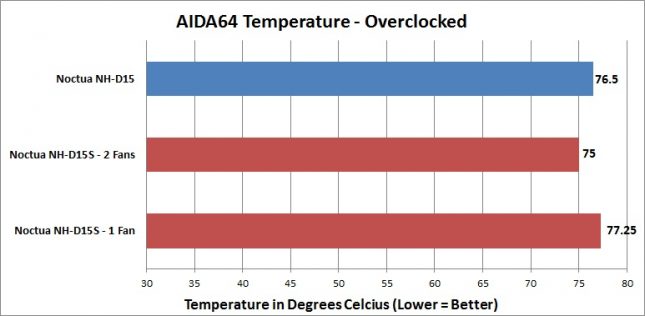Noctua NH-D15S versus NH-D15 CPU Cooler Review
Noctua NH-D15S Benchmarking & Overclocking
In the benchmarks that will be run, we used an Intel 4770k clocked at 3.5GHz with Turbo Boost and the low power state enabled. Turbo Boost allows the 4770k to hit up to 3.9GHz right out of the box. Stock results will be utilizing auto for the multiplier and v-core, which reads 1.1750v in Core Temp, and overclocking will utilize manually entered multiplier and voltage numbers. In this case, our Intel Core i-7 4770k was able to obtain a 4.4 GHz overclock at 1.185 volts.
To record temperatures, we used Core Temp v1.4 to monitor and record temperatures. For our idle temperature, we will average the readout across all four cores from Core Temp. When stress testing, we will use Core Temps Max number and average all four cores.
Slimming down on the benchmarks from previous reviews, well be strictly using AIDA64 to stress the CPU and no games. Within AIDA64, we will be running the System Stability Test and choosing the Stress CPU, FPU, Cache, and System Memory tests for thirty minutes. This will peg all four cores and eight threads to 100%, which will help us to understand exactly how hot this CPU can get with each cooler.
Ambient temperature during all testing was 72 degrees Fahrenheit.
Since this is an older cooler, were just doing a comparison between the NH-D15 and NH-D15S. We have also decided to switch from Prime95 to AIDA64 going forward, as we feel it will provide even better results. In the future cooler reviews, we will add a few choice coolers to the charts for comparison, but again, this time it is strictly between the two Noctua coolers.
ALL COOLERS will be using Noctua NT-H1 thermal compound, which requires zero cure time.
Idle
AIDA64 @ 3.9GHz
AIDA64 @ 4.4GHz
Overall Results: Quite frankly, between the two Noctua coolers I expected nearly identical results with a 2-fan configuration, and thats exactly what I saw. When it comes to adding one additional fan, it could very well be a decent investment for slightly better cooling capabilities.



